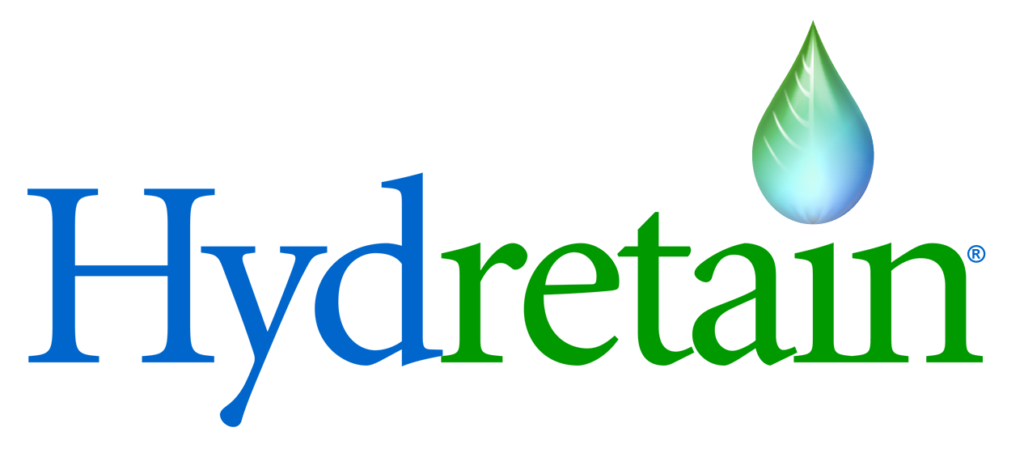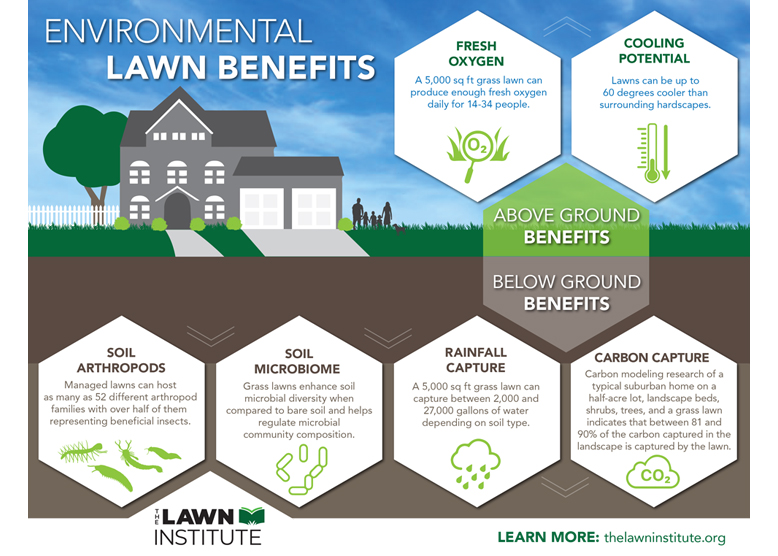April is National Lawn Care Month. It is a time to celebrates the benefits and joys of having a healthy lawn. Though lawns sometimes get a bad rap, when maintained properly, lawns can provide significant environmental benefits:
Oxygen Production
It is a well-known fact that plants produce oxygen, but did you know that researchers have been working to determine how much fresh oxygen natural grass lawns produce. According to the Lawn Institute one 5,000 sq. ft. grass lawn can produce enough oxygen each day to support 14 to 34 people, depending on location.
Keeping your lawns healthy and free of moisture stress actually aids in the oxygen making process.
Runoff Reduction
Unfortunately, lawns are sometime perceived as being the pollutants, and the ones responsible for runoff. But many know that lawns are truly great at reducing runoff, collecting and then filtering water.
Depending on your soil type a 5,000 sq. ft. natural grass lawn has the potential to capture around 2,000 – 27,000 gallons of rainwater before runoff occurs; and the thatch alone can capture up to 500 gallons.
Lawns also act as a natural filter for the water. The extremely dense and fibrous root system of grass lawns acts to trap and remove non-point source pollutants before they enter groundwater supplies. Grass is often used in urban areas for catchment and filtration. This is due to its ability to trap pollutants like heavy metals, oil, grease, and fuels. Household and industrial hazardous waste can also be captured by natural grass before entering surface waters.
Cooling effect
On a hot summer day, you may find yourself stretching out on your lawn. This is because lawns naturally cool themselves in a process called transpiration. Transpiration occurs when plants lower their temperature through evaporation. According to the University of Florida Institute of Food and Agriculture Sciences (UF/IFAS) the surface temperatures of natural grass can be up to 100 degrees cooler than surfaces of synthetic turf. The benefit is not just for your feet, but for your home. Front lawns of a single house have the cooling effect of 9 tons of air conditioning. To put that in perspective, the average homes AC typically has a capacity of 3-4 tons. This can reduce your AC bills in the hot months.
Improved Air Quality
Lawns take approximately 5% of the carbon dioxide from earth’s atmosphere, which can help negate the effects of global warming. Researchers investigated the carbon capture of a suburban home located on a half-acre lot with a grass lawn, trees, shrubs, and landscape beds surrounding the home. The research concluded that 81-90% of the carbon captured was captured by the lawn alone.
Lawns don’t only capture CO2, they also capture other air pollutants like dust, dirt and allergens. It is estimated that turf grasses remove 12 million tons of impurities from the air in the United States every year.
Additional positive effects of natural grass lawns:
- Curb appeal: A well-manicured lawn can increase home value as much as 15%.
- Supports a thriving ecosystems below the surface
- Helps prevent soil erosion.
- Lawns and landscapes provide a variety of mental health and social benefits.


